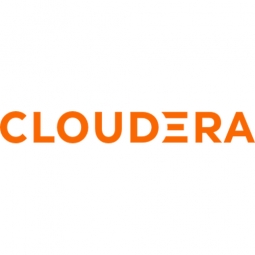
Technology Category
- Infrastructure as a Service (IaaS) - Private Cloud
- Platform as a Service (PaaS) - Application Development Platforms
Applicable Industries
- E-Commerce
- National Security & Defense
Use Cases
- Behavior & Emotion Tracking
- Traffic Monitoring
The Customer
Not disclosed
About The Customer
The customer is a global information technology services company that provides one of the largest e-commerce platforms in the world. The company serves a vast number of customers, processing a high volume of internet transactions daily. As a result, the company deals with an exponentially growing volume of data that needs to be efficiently managed and processed. The company's primary need was to improve the relevance of information discovery and enhance the search function across all applications on its platform. The company also aimed to create a modern architecture framework to enable better searches, replicate data, and perform experimental customization analytics.
The Challenge
The global information technology services company, which provides one of the largest e-commerce platforms in the world, was facing challenges due to the exponential growth in data volume resulting from increased internet transactions. The company needed to improve the relevance of information for discovery and required a semantic search engine to power the search function for all applications on its platform. This was crucial to understand user intent through search context and improve the relevance of results. The company also needed to create a modern architecture framework to enable better searches, replicate data, and perform experimental customization analytics. The challenge was to move data efficiently to allow effective searchability, a task the company was struggling with. The platform also needed to handle increased search traffic and data volumes expected in the future, while adhering to high security and compliance standards and avoiding high costs.
The Solution
To address these challenges, the company migrated 900+ nodes to Cloudera’s CDP Private Cloud Base for all data processing and storage, replacing the end-of-life CDH platform. The company also needed a solution for streaming workloads and chose Cloudera Data Flow’s (CDF) Streams Messaging, which includes Apache Kafka, Streams Replication Manager (SRM), and Streams Messaging Manager (SMM), replacing Confluent. This decision was made to replicate data across global data centers, secure and back up the data, and meet SLA requirements while maintaining high data availability. Kafka support was needed to buffer streaming data for their use cases. The company preferred the monitoring and deployment management using Cloudera Manager compared to Confluent Control Center. SRM and SMM were used for data replication and monitoring, providing a great deal of observability.
Operational Impact
Quantitative Benefit

Case Study missing?
Start adding your own!
Register with your work email and create a new case study profile for your business.
Related Case Studies.

Case Study
Data Capture for Afghanistan Forces
Electronic equipments on the field of Afghanistan provided information on the status of the vehicle and to identify potential threats surrounding it to the British Force. The monitoring and interpretation of this data requires robust and sophisticated digitization for data capture and communication.

Case Study
Digital Transformation of Atlanta Grout & Tile: An IoT Case Study
Atlanta Grout & Tile, a Tile, Stone & Grout restoration company based in Woodstock, Georgia, was facing challenges with its traditional business model. Despite steady growth over the years, the company was falling behind the web revolution and missing out on the opportunity to tap into a new consumer base. They were using independent software from different vendors for each of their department information and workforce management. This resulted in a lot of manual work on excel and the need to export/import data between different systems. This not only increased overhead costs but also slowed down their response to clients. The company also had to prepare numerous reports manually and lacked access to customer trends for effective business decision-making.

Case Study
Major Aerospace Company Automates Asset Management
The O&M division of an aerospace and global security company was using spreadsheets to manually track more than 3,000 assets assigned to students and staff. Maintaining audit trails for this high volume of equipment became increasingly time-consuming and challenging. The chore involved knowing precisely what equipment was on hand, what had been issued, its location and the name of the custodial owner of each item. Every aspect of this task was carried owner of each item. Every aspect of this task was carried out by individuals with spreadsheets. Manually documenting the full lifecycle of each asset added to the burden. This included tracking maintenance requirements and records, incidents and damages, repairs, calibrations, depreciation, and end-of-life data.

Case Study
Securing a Large Data Center in the EMEA Region: An IoT Case Study
A leading data-center operator in the EMEA region, with multiple facilities spanning over 25,000 square meters, faced significant security challenges. The operator experienced interruptions in their internal IT network due to unsupervised work of third-party technicians. Despite having a high-end building control system that provided 24x7 monitoring and control to all the building’s infrastructure, the data center was vulnerable from a cyber perspective as it was connected to the IT network infrastructure. The operator launched an urgent OT cyber security project that included both IT-OT network segmentation and OT network asset mapping and anomaly detection. The main objectives were to harden the security of the server systems, secure the facility’s power supply and server cooling system, strengthen the segmentation between building and operational systems, create a visual OT network map, and set up a system for presenting supply-chain attacks that may threaten the data center through equipment vendors’ maintenance activities.

Case Study
IFFCO Boosts IT Performance and Innovates Agriculture with Oracle Cloud
Indian Farmers Fertiliser Cooperative Ltd. (IFFCO), the world’s largest manufacturer and marketer of fertilizers in the cooperative sector, was facing several challenges in its quest to innovate and improve the livelihood of farmers in India. The organization had recently launched a new product, nano urea, which brought new demands to IFFCO’s cloud computing needs. The organization needed a reliable cloud vendor to support the processes of 6–7 new manufacturing plants during the upcoming year, enhancing its production capability 300–350 million bottles of nano urea to meet increasing demand. IFFCO’s cloud adoption was driven by a need to innovate. The organization wanted capabilities for a dynamic business that can adapt to the changing needs of the market while growing fast. However, it was inhibited by rigid on-premises data center deployments and the overhead of maintaining legacy systems. IFFCO wanted to apply the elasticity and availability of cloud for improving overall performance of applications at lowest possible operational overhead. Lastly, IFFCO needed to provide the benefits of its technology to all its stakeholders, including employees, members, transporters, and farmers, some of whom have limited literacy. To accommodate all stakeholders, IFFCO wanted to add a voice interface to its applications.

Case Study
Enhancing Security Precision with IoT: A Case Study of Guardsman Group
Guardsman Group, a leading security company in the Caribbean, faced a significant challenge in maintaining the security of its digital infrastructure. The company provides security equipment, personnel, and systems for various businesses across the region. However, one of its offices experienced a security incident that affected all communications at that location. The existing security tools were not sufficient to provide the necessary protection, and it took hours to identify the source of the issue. This incident highlighted the need for a dynamic solution that could proactively identify threats. The company's primary concern was any disruption to its business, as it manages a significant portion of Jamaica's money and cannot afford for its operations to go down.



